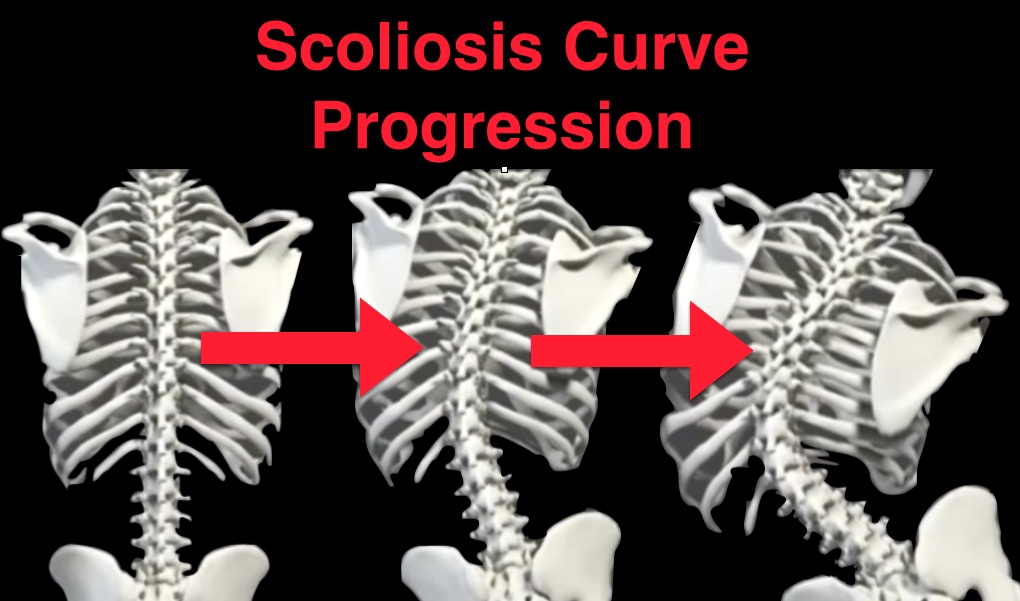
A study that examined idiopathic scoliosis curve progression was entitled Curve Progression in Idiopathic Scoliosis, in the Journal of Bone and Joint Surgery, SL Weinstein and IV Ponseti, J Bone Joint Surg. Am. 1983:65;447-455 was a long term study that followed untreated patients over a 40 year period at the University of Iowa Hospital and based on the medical records evaluated the likelihood of an idiopathic scoliosis curve progression overtime based on their age of onset, degree of curvatures and amount of rib cage rotation and imbalance from right to left.
They found that the average degree of curvature when reaching skeletal maturity was 51 degrees but that the majority of patients showed a continued progression of their curvatures to more than 63 degrees, indicating a 13 degree progression over that time period.
What they discovered from this long term retrospective study was as follows:
- 68% of the untreated scoliosis curvatures they studies progressed further after reaching adulthood This finding was also reported in two other studies that examined idiopathic scoliosis curve progression (contrary to the current conventional wisdom that believes once the spine reaches skeletal maturity the risk of further progression of the scoliosis stops)
- The earlier the onset of the scoliosis the greater the likelihood of idiopathic scoliosis curve progression
- The larger the scoliosis curvature the greater the likelihood of scoliosis progressing
- The location of the scoliosis curvature played a role in the likelihood of progression, with thoracic scoliosis curvatures being more likely to progress than lower curvatures, especially those with the curve apex high in the thoracic spine
- While lumbar scoliosis curves were less likely to progress, if the 5th lumbar vertebra was not well seated in between the two illiac crests then it too would be more likely to progress
- The greater the degree of rotation of the rib cage the greater the likelihood of idiopathic scoliosis curve progression
- The greater the difference in rib separation from the right to left side the greater the chance of the scoliosis progressing
- While curvatures less than 30 degrees had a lower chance of continued progression into adulthood, a scoliosis curvature of 30 degrees or greater had an increased likelihood of progression
